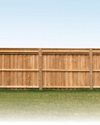
We've all seen ugly kitchens-cabinets stained from decades of use or with a cringeworthy outdated style. Hiring a remodeling crew is expensive and can take your kitchen offline for weeks-even months! I'll show you how to give your kitchen a face-lift for a fraction of the cost and disruption.
1 STRIP DOWN THE CABINETS
Remove all the doors, hinges and drawer fronts. Label all the parts for reference later. I used numbers, but you can use anything that helps you remember what goes where.
2 TAKE MEASUREMENTS
Take accurate measurements of each rail and stile to determine the overall size of each cabinet. I drew all my cabinets in SketchUp, but you can use graph paper. Next, measure all doors and drawer fronts, and give each one a name or designation.
3 SAND THE FACE FRAMES
Normally I want to roughen a surface that's being glued, but not with PSA-backed veneer.
For pressure-sensitive adhesive, you want the substrate smooth.
I sanded the painted surface of the rails and stiles with 320-grit sandpaper-not to sand off all the paint, only to make it smooth.
4 CUT VENEER STRIPS
Using the Virutex veneer cutting tool, cut the strips for the face frames 1/8 in. oversize; any more would be wasting material.
5 VENEER THE STILES
Start by veneering the inside edges of the door frames, which creates the look of solid wood when the door is open. Next, apply veneer to the front of the stiles. Trim it flush with a compact router and flush-trim bit.
6 VENEER THE RAILS
Using the FastCap seaming tool and a marking knife, trim the stile veneer flush to the rail. Apply veneer to the rail. Using the seaming tool again, trim it to fit.
7 SAND THE FACE FRAMES
This story is from the October - November 2022 edition of Family Handyman.
Start your 7-day Magzter GOLD free trial to access thousands of curated premium stories, and 9,000+ magazines and newspapers.
Already a subscriber ? Sign In
This story is from the October - November 2022 edition of Family Handyman.
Start your 7-day Magzter GOLD free trial to access thousands of curated premium stories, and 9,000+ magazines and newspapers.
Already a subscriber? Sign In

7 Bicycle Maintenance Tips
Keep your bike in tiptop shape and ride safe!

SETTING FENCE POSTS WITH EXPANDING FOAM
Any fence builder knows you need strong posts for a strong fence, and that means backfilling the postholes with a dense, hard material other than dirt.

PEBBLE MOSAIC STEPPING STONES
COLLECT SOME RIVER ROCK AND MAKE YOUR OWN UNIQUE STEPPINGSTONE PATH

EARTH-FRIENDLY WEED KILLERS
HEALTHIER CHOICES FOR HUMANS AND THE ENVIRONMENT

DIY! HYDROPONIC GARDEN
FRESH VEGETABLES AT YOUR FINGERTIPS

GROW MINI VEGETABLES
GROW A GARDEN IN A TINY SPACE!

BUILD A VERTICAL GARDEN
TIME TO GROW UP!

MODERN WATER FOUNTAINS
A SPLASH OF PEACE FOR YOUR PATIO

9 ALTERNATIVE USES FOR SAWDUST
Every fully stocked wood shop has a table saw. You can usually find a pile of sawdust under it, even if it's used only occasionally. If a shop has a belt sander or band saw, there's probably another pile of finer sawdust under that. Even people without stationary tools have sawdust accumulation on their workbenches.

INSULATE WITH FOAM
IT'S A GREAT ALTERNATIVE TO FIBERGLASS